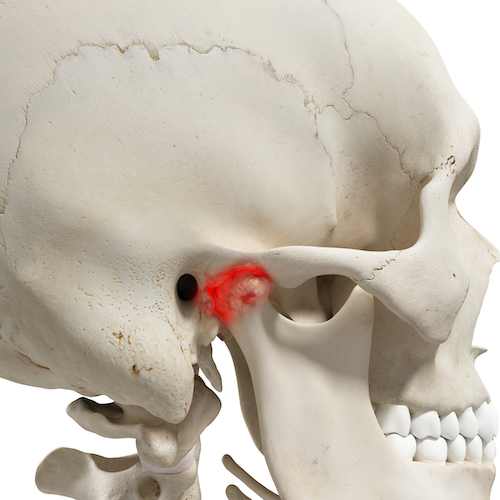TMJD: How to Recognise and Treat Jaw Pain
Temporomandibular Joint Dysfunction (TMJD) or more simply put, jaw pain, is a common condition that is estimated to affect approximately 12% of the population at some point in their life. Learn the causes and symptoms of TMJD as well as the best actions to take to treat jaw pain.
What is TMJD?
 The jaw is a complex joint that has multiple muscles and a small disc that is attached to the mandible. TMJD includes a group of conditions that cause pain and dysfunction in the jaw joint and the muscles which control jaw movement.
The jaw is a complex joint that has multiple muscles and a small disc that is attached to the mandible. TMJD includes a group of conditions that cause pain and dysfunction in the jaw joint and the muscles which control jaw movement.
There are three main categories that the conditions fall into:
1. Pain from the muscles around the jaw that control jaw function.
2. Problems involving displacement or degeneration of the disc that sits within the jaw joint.
3. Arthritis involving the jaw. Excessive wear and tear due to incorrect jaw alignment or joint biomechanics can lead to arthritis developing in this joint.
Causes of Jaw Pain
There are many potential causes of jaw pain. These include:
- Joint tracking dysfunction
- Clenching and grinding
- Muscle imbalances
- Damage of the disc
- Cartilage in the jaw
Repercussions of Untreated TMJD
Because there are so many potential causes for jaw pain, it is important to treat jaw pain and get any type of pain correctly assessed as soon as possible. Temporomandibular dysfunction can be an extremely debilitating condition to suffer from. It can lead to issues beyond just pain in the jaw. It can lead to difficulty eating and chewing heavy foods, facial pain, headaches and migraines, hip tension, and shoulder imbalances plus weakness in the internal core.
Jaw Pain Treatment
There is a range of health care professionals who can assess and treat jaw pain and dysfunction, ranging from allied health practitioners such as chiropractors and TMJ physiotherapists, many dentists plus more specialised neuromuscular dentists.
A good starting point to effectively treat jaw pain is visiting an allied health practitioner who will assess the range of motion, assess tracking of the jaw, release the tight muscles and joints around the jaw, as well as prescribe TMJ pain relief exercises if needed. If the jaw dysfunction requires further intervention involving a specialist or neuromuscular dentist, the allied health practitioner should have a good referral network to someone specialised in that area.
Treat Jaw Pain with Dr Miki
I treat a lot of TMJD or jaw pain patients and have had success helping people who have suffered from headaches and neck pain associated with their jaw dysfunction. If you would like more information about how chiropractic may be able to help treat jaw pain or if you would like to come in for an appointment I would love to help. Feel free to book online or contact us today.








